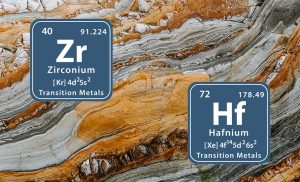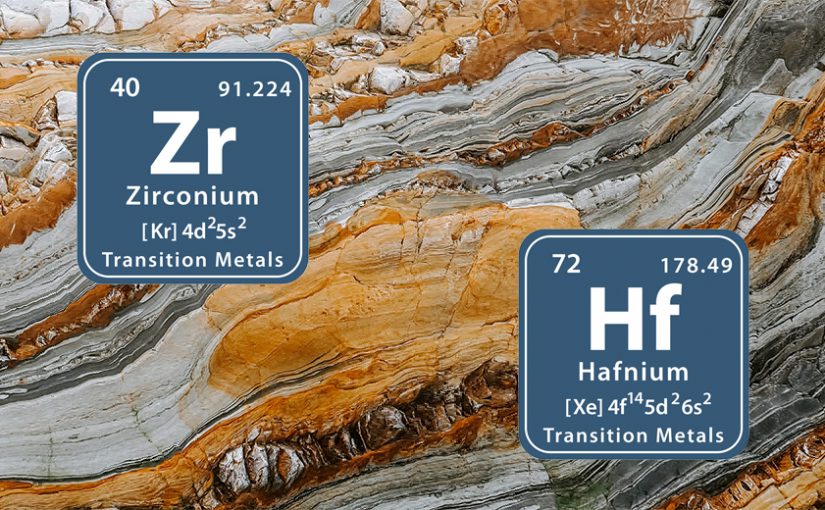The two elements of zirconium and hafnium are symbiotic resources, which means that zirconium generally contains 0.5% to 2% of hafnium. However, the application of zirconium products in various industries requires high purity. For example, zirconium, which is a structural and cladding material for nuclear reactors, must contain less than 0.01% hafnium. In general, the metallurgical process of separating zirconium and hafnium is an important part of the zirconium metallurgical process.
The separation methods of zirconium and hafnium include pyrolysis separation, solvent extraction separation, and ion exchange separation. This article will briefly introduce these three separation methods.
Zirconium and Hafnium Pyrolysis Separation
Pyro separation is a method of separating zirconium and hafnium at high temperature or high pressure by using the difference in vapor pressure of zirconium and hafnium chloride. Zirconium and hafnium pyrolysis can replace the three production stages of extraction, calcination and chlorination in common separation methods. It has the characteristics of a short production process, high efficiency, low reagent cost and light pollution to the environment, and is a promising method for separating zirconium and hafnium.
The pyrolysis method is mainly realized by high-pressure rectification and molten salt rectification. High-pressure rectification is a process of directly separating zirconium and hafnium by using the difference in vapor pressure of Zrcl4 and HfCl4. Molten salt rectification is a process of separating zirconium and hafnium in a rectifying tower by using the difference in saturated vapor pressure of ZrCl4 and HfCl4 in KAlCl4 molten salt.

Zirconium and Hafnium Solvent Extraction
This is a method for the separation of zirconium and hafnium using solvent leather. Compared with other separation methods of zirconium and hafnium, this method has the advantages of large production capacity, simple process, and easy to achieve continuously. It is the most important method for the separation of zirconium and hafnium.
The reagents used in this method mainly include ketone extractant, neutral phosphorus-containing extractant and amine extractant. There are three extraction processes of MIBK, TBP and N235. There are two main types of extraction equipment, one is the extraction tower, and the other is the box-type mixer-settler. The former is used by the MIBK process, and the latter is used by TBP and N235 extraction process. The extraction tower occupies a small area and has a large production capacity. The box-type mixer-clarifier is simple in structure and stable in operation, and is generally made of acid-resistant materials such as plastic or plexiglass.
Further Reading: Separation of Zirconium and Hafnium by Solvent Extraction
Zirconium and Hafnium Ion Exchange Separation
As the name suggests, this is a method for the separation of zirconium and hafnium by ion exchange. The production volume of this method is small. Only the former Soviet Union has used it to further separate zirconium and hafnium from the hafnium-rich material separated by the zirconium-hafnium recrystallization method to obtain hafnium oxide, which is used as the raw material for the production of atomic-level sponge hafnium.
For more information, please visit https://www.samaterials.com/.
